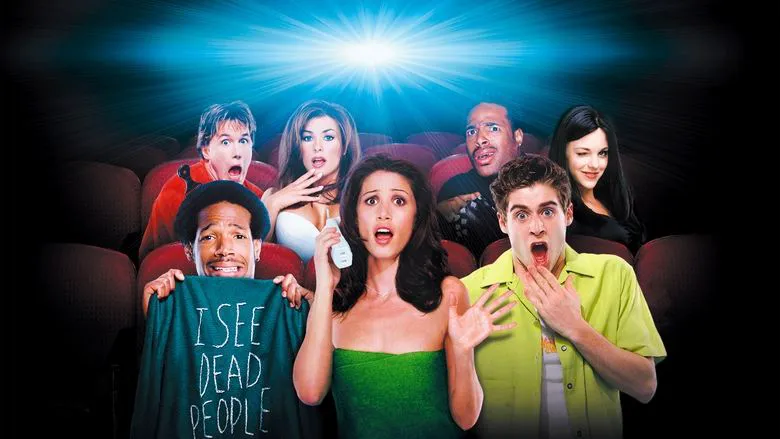Scary Movie: A Hilariously Tasteless Masterpiece
This film could be called doubly or even triply “black” because the three black Wayans brothers played decisive roles in its creation, quite worthy of standing alongside the Wachowski siblings and the Coen brothers. While we have “Brotherhood” and “Brother 2” on our screens, they have “fraternal cinema.” “Scary Movie” (with a budget of $19 million, grossing $155 million in the US alone) is solemnly dubbed by distributors as “the most tasteless film of the year,” and it has every reason to be. The display of male genitalia, ejaculation in the form of a geyser, the inscription “Miss Fellatio” on a beauty’s chest, loud flatulence (smells are not transmitted to the hall, fortunately), rampant profanity - in short, all the hallmarks of the “not recommended for under 16s” category…
…if the film weren’t about teenagers and primarily intended for young audiences. On the other hand, programmatic tastelessness is a manifestation of a very specific taste, and the total mockery of movie hits and the youth lifestyle makes the film interesting even for those well over 16, even twice over.

The beginning is as typical as “Once upon a time…” (take “Halloween,” for example): a lonely girl in a completely visible house, a phone call, and the lowered voice of a threatening observer. But after the line “I know what you did last summer” (a company of semi-drunk and stoned teenagers hit a passerby with a car and dumped him in the water), the standard “horror” naturally transitions into a comedy mixing “revenge movie” and “serial killer films,” where “The Matrix,” “The Sixth Sense,” “American Beauty,” “Scream,” “There’s Something About Mary,” “The Blair Witch Project,” and who knows what else are parodied, on which fans can test their film erudition.

Despite this citational nature, the film has a bunch of original gags and brilliantly executed scenes, like the one where a black shrew (shamelessly parodying Whoopi Goldberg) annoys the audience of “Shakespeare in Love” so much during the screening that they collectively kill her, or the one where the aforementioned “Miss Minetti,” who is supposed to show her dramatic skill on stage, sees her friend being killed in the box and screams in horror, driving the audience into a frenzy.

But perhaps the most surprising thing about this brazen film is the murderous conviction of the characters, whether they are stupid white jocks or black idiots, masculine gym teachers or feminine cops, shy prudes or shameless sluts. The authors know not only cinema but also the environment they so shamelessly mock, and they almost never descend into the senseless clowning so characteristic of our “stupid” comedies, where the characters grimace uncontrollably, forgetting about any semblance of truth.